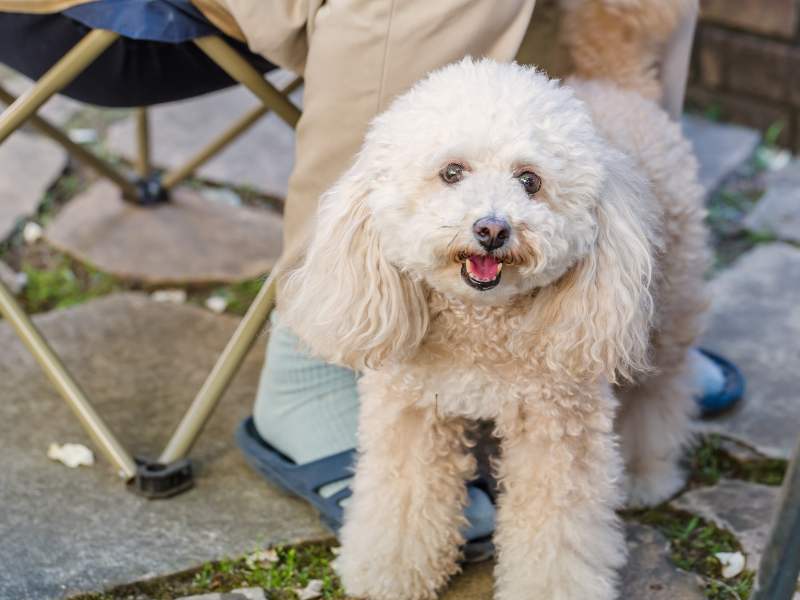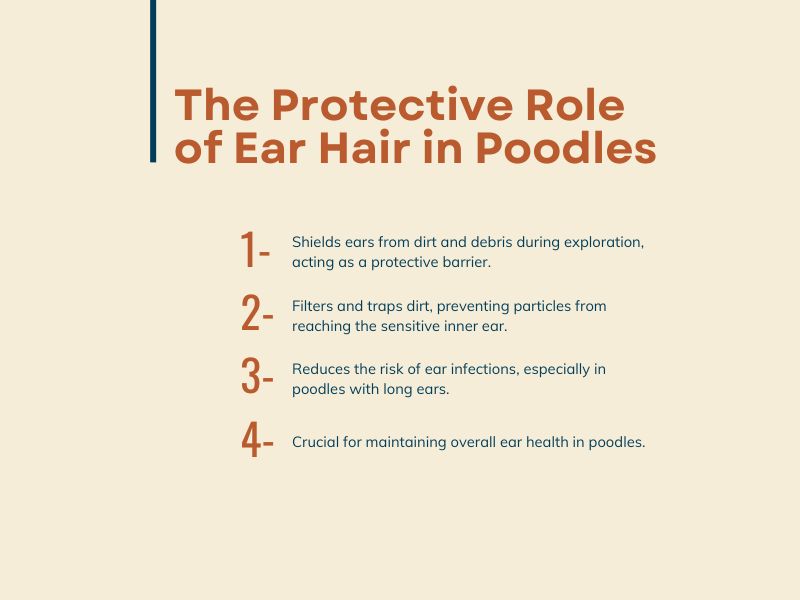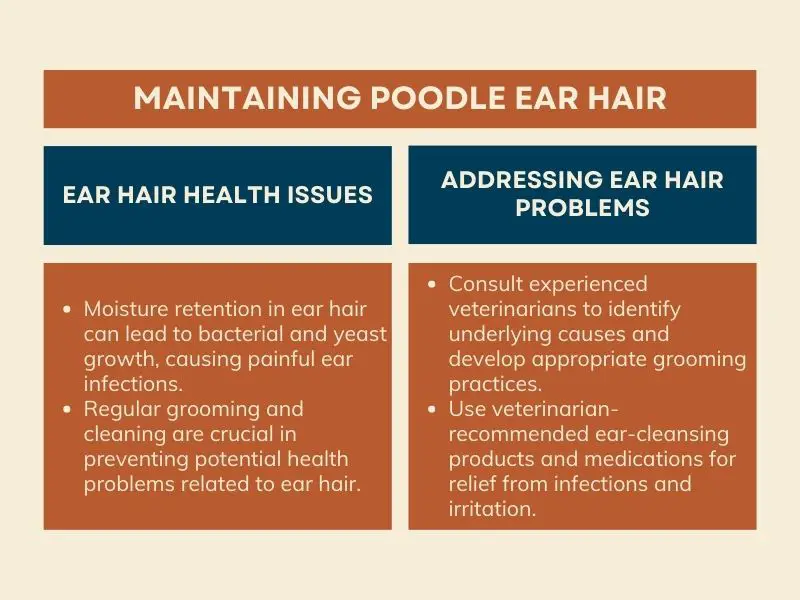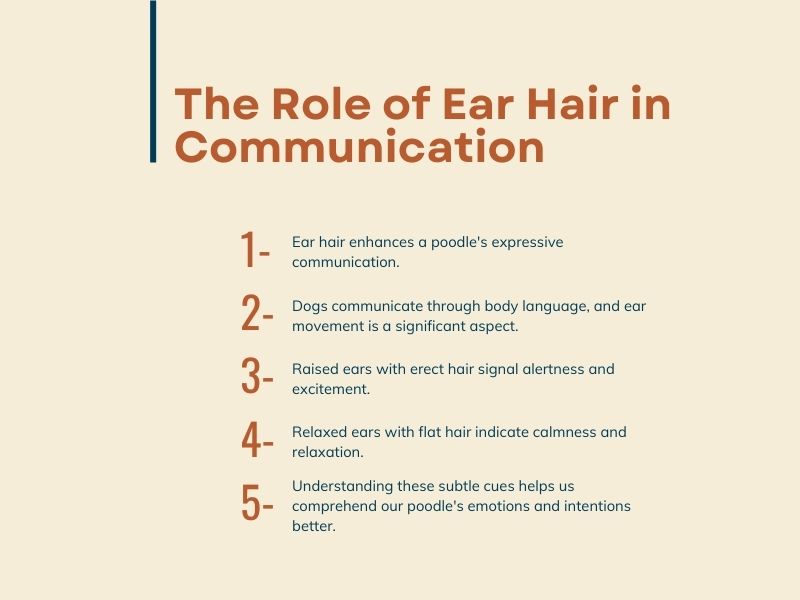Poodles, with their unique appearance and charming demeanor, have always been a popular choice among dog enthusiasts. One distinctive feature that sets them apart is the hair that graces their ears. Have you ever wondered why poodles have hair in their ears? In this article, we will explore the reasons behind this peculiar trait and its importance.

Understanding Poodle Ear Hair Growth
To understand the role of ear hair in poodles, we must first look at their ear anatomy. Poodles have long, pendulous ears with hair follicles that contribute to the diversity of their coat. The growth of ear hair is influenced by their genetics, leading to variations in length and density.
Ear hair, like the rest of their coat, goes through a natural growth cycle, with old strands shedding to make way for new hair. Regular grooming is essential to maintain ear hygiene and prevent discomfort due to their unique ear structure.
The Protective Role of Ear Hair
The primary purpose of the hair on a poodle’s ears is to serve as a protective barrier. As active dogs, poodles explore various terrains, exposing their ears to dirt and debris. Ear hair acts as a shield, preventing foreign particles from entering the ear canal.
Furthermore, ear hair acts as a filter, trapping dirt and particles and preventing them from reaching the inner ear. This filtering mechanism is crucial in preventing ear infections, which can be more common in poodles with long ears due to limited air circulation and increased humidity. Thus, ear hair serves as a protective shield, safeguarding the poodle’s ears.

Maintaining Poodle Ear Hair
As responsible poodle owners, grooming rituals are essential in caring for their ear hair. Regular cleansing and removal of debris helps prevent irritation and infections. Trimming and plucking are necessary to prevent tangling and matting and maintain a tidy appearance.
However, it is crucial to approach grooming with care and seek professional advice when needed, as excessive handling can cause distress for the poodle. Periodic checks of the ear condition and hair growth are vital to detect any potential issues early on.
Potential Health Issues Related to Ear Hair
While ear hair offers protection, it may inadvertently lead to moisture retention, creating an environment conducive to bacterial and yeast growth. This can result in painful ear infections. Regular grooming and cleansing rituals are effective countermeasures against these issues.
Addressing Ear Hair Problems
For recurring ear problems, consult experienced veterinarians to identify the underlying causes and develop appropriate grooming practices. The judicious use of ear-cleansing products and medications can provide relief from infections and irritation.

The Role of Ear Hair in Communication
Beyond protection and health, ear hair adds to a poodle’s expressive communication. Dogs communicate through body language, and the movement of their ears plays a significant role. Raised ears with hair standing erect signify alertness and excitement, while relaxed ears with flat hair indicate calmness and relaxation. Being attuned to these subtle cues allows us to understand our poodle’s emotions and intentions better.

Ear Hair and Temperature Regulation
Ear hair also helps with temperature regulation, providing insulation in cold weather and protection from heat in warm climates. In this way, poodles with thinner coats or living in extreme weather conditions find comfort in their ear hair.
Related: Are Poodles Allergic to Chicken?
Poodle Ear Hair in Different Coat Types
The ear hair narrative extends to the diversity of coat types in poodles. Each coat palette presents a unique ear artistry, reflecting the individuality of each poodle. Whether standard, miniature, or toy, poodles stand resplendent amidst the constellation of canines.
The Evolutionary Aspect of Poodle Ear Hair
The origin of poodle ear hair lies in their historical role as water retrievers. Their coat, including their ear hair, provided insulation and protection during aquatic tasks. As poodles transitioned into beloved companions and show dogs, ear hair became an iconic emblem, setting them apart in the canine world.
Understanding Your Poodle’s Ear Hair Needs
Understanding your poodle’s ear hair requires attentive observation and tailored grooming rituals. Seeking advice from grooming professionals and veterinarians ensures a harmonious experience. For active poodles, regular grooming prevents tangling, while sensitive poodles benefit from gentle care to avoid ear issues. Embracing the uniqueness of each poodle’s ear hair creates a symphony of well-being and happiness.
Related: Why Do Poodles Breathe Fast?
Conclusion
Poodles have hair in their ears to provide protection from foreign objects, filter dirt and particles, aid in temperature regulation, and enhance their communication through ear movements. This unique trait is deeply rooted in their history as water retrievers and has evolved to become an iconic feature, making them exceptional companions with a blend of functionality and elegance.
FAQs (Frequently Asked Questions)
It is not recommended to remove hair from poodles’ ears entirely, as the ear hair serves as a protective barrier against foreign objects and helps maintain ear health. However, regular grooming and trimming to keep the hair at a manageable length are essential to prevent tangling and matting, ensuring the well-being of the poodle’s ears. Seeking professional guidance for ear hair maintenance is advisable to avoid any potential discomfort or injury to the poodle.
To remove hair from your poodle’s ears safely, use blunt-tipped grooming scissors to trim the hair around the ear openings, being cautious not to cut too close to the ear canal. Clean the ears with a veterinarian-recommended ear-cleaning solution and reward your poodle with treats and praise throughout the process. Regularly check and groom your poodle’s ears to maintain their health and cleanliness. For any uncertainties or issues, consult a professional groomer or veterinarian.
Poodles can be susceptible to ear infections, especially when not properly cared for. Regular cleaning and grooming help prevent such issues.
Like other hairs, ear hair does shed to some extent. Regular grooming minimizes excessive shedding, keeping the ears in good condition.
The frequency of ear cleaning varies depending on your poodle’s needs. As a general rule, weekly checks and cleaning help maintain ear hygiene and happiness.
